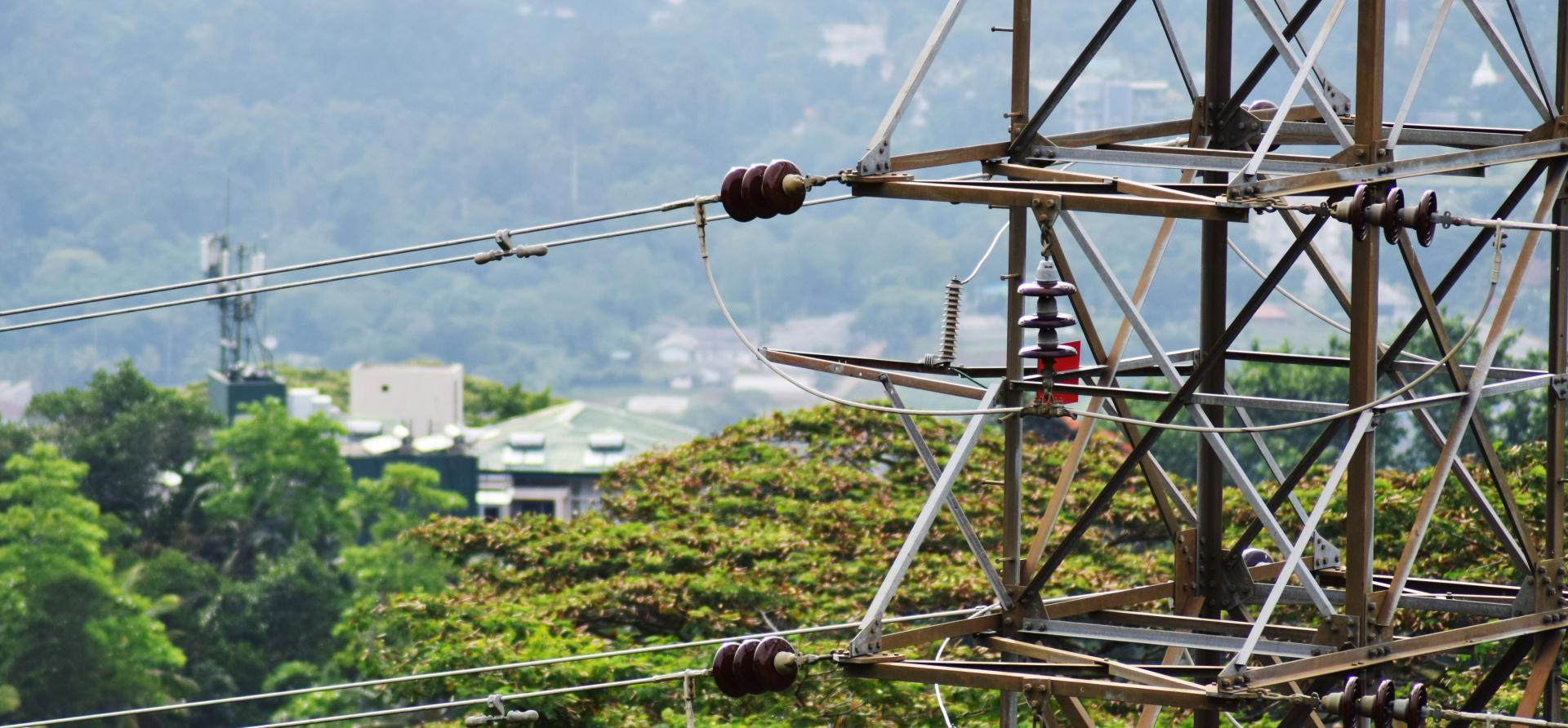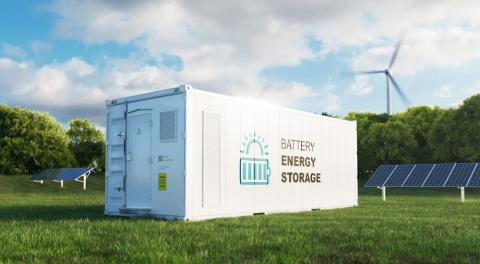IEEFA: Sri Lanka must learn lessons from around Asia to avoid further electricity crises

Sri Lanka’s electricity issues made international headlines in August 2020 when a technical issue at a substation caused a blackout that left the entire nation without power.
This incident followed widespread power shortages across the country in 2019 as drought impacted Sri Lanka’s hydro power generators.
Sri Lanka should be careful to avoid the mistakes made in other Asian countries
However, with a lack of new capacity construction being blamed for the power crisis, Sri Lanka should be careful to avoid the mistakes made in other Asian countries now suffering from excessively optimistic demand growth forecasts, and the resulting overcapacity and unsustainably high power subsidies.
Until relatively recently, Bangladesh was also suffering from a lack of power generation capacity that was holding back its fast-growing economy.
Unfortunately, when the power construction taps were opened they were left running for too long. Bangladesh now has a major overcapacity problem that is leading to a growing financial crisis within its power system.
With a power capacity utilisation rate of just 43% Bangladesh’s capacity payments to plants lying idle much of the time are increasing. This in turn has led to rising government subsidies – now expected to be over US$1 billion per annum – to the Bangladesh Power Development Board. With more expensive imported fossil-fuelled power capacity planned, subsidies are set to rise and become increasingly unsustainable.
Sri Lanka planning expensive coal and LNG generation
With opportunities to expand hydro power limited, and the technology vulnerable to drought, the Ceylon Electricity Board (CEB) is focusing on expensive coal- and LNG-fired power in its latest draft Long Term Generation Expansion Plan, dated March 2020.
Although wind and solar power additions are also planned, it is imported fossil fuels that dominate the new power plan despite the CEB acknowledging that Sri Lanka has plentiful solar and wind resources. Almost 70% of power generation will come from coal, gas and oil in 2039, up from around 60% in 2020, according to the plan.
Subsidies are set to rise and become increasingly unsustainable
Despite a growing focus on renewable energy investment around the world, the plan sees the total percentage contribution from renewable energy (including large hydro) peak in 2023 and then decline going forward. Meanwhile, it is envisaged that coal-fired power will continue to be added in the late 2030s.
The CEB notes the continuing economic benefits of reliance on coal-fired power in its plan. This is increasingly out of touch with power developments around Asia.
The CEB states, “It was noted during the planning studies that other prominent economies in the region such as India, Indonesia, Vietnam and Bangladesh are continuing the development of coal power plants owing to the economic advantages they offer.”
In fact, these four nations all serve as case studies to warn CEB about the false premise of increasing fossil fuels at a time when renewable energy is ever cheaper, cleaner and more efficient.
Burdened with overcapacity and rising power subsidies, Bangladesh’s power ministry has requested approval from the Prime Minister to cancel 13,000 megawatts (MW) of planned coal power plants.
In India, the dramatic decrease in solar and wind power costs has seen renewable energy additions dominate in recent years whilst net coal-fired power additions slowed to a trickle (just 2% in fiscal year 2019/20).
This is increasingly out of touch with power developments around Asia
Vietnam is set to release a new long-term power plan of its own and it is already clear that the nation’s emphasis on coal is to be dialled down significantly with up to 17,000MW of coal power proposals to be cancelled or postponed.
Meanwhile, Indonesia’s continued over-reliance on coal-fired independent power producers (IPPs) is leading to the need for rapidly escalating government subsidies. The subsidy reached an enormous US$5 billion in 2018.
With more of these coal projects set to come online, Indonesia’s IPP payments are set to increase further still. Further reliance on government subsidies is unsustainable and it seems inevitable that power tariffs will have to increase.
Poor power demand forecasting is at the root of planning issues
Indonesia’s power sector issues have not been helped by its inaccurate power demand forecasting. The latest iteration of Indonesia’s power development plan includes a power demand growth forecast for 2019-2028 of 6.4% a year. This is despite the fact that actual power demand growth in 2018 was only 5.1% and the average for 2013 to 2018 was just 4.6% a year.
Such miss-forecasts compound over time and are the basis for planning too much power capacity development, resulting in overcapacity and higher capacity payments, subsidies, and tariffs. Pakistan’s new long-term power plan – released in April 2020 – also includes power demand forecasts that look too optimistic and risk locking the country into further, expensive overcapacity.
Sri Lanka needs to be careful not to make the same mistake.
The CEB’s long-term plan forecasts power demand growth of 7.4% in 2020, 7.6% in 2021 and then 5.5% each year out to 2025. This is despite the CEB disclosing that demand growth was only 5.1% in 2017 and 4.9% in 2018.
Further reliance on government subsidies is unsustainable
Furthermore, the CEB included a comparison of its past power demand forecasts to actual figures in the new plan. It shows a historical tendency to over-estimate power demand growth on the part of CEB, a consistently optimistic bias seen in most power demand forecasts globally.
A careful review of power demand forecasts in the wake of Covid-19 is advisable if Sri Lanka is not to go from one extreme to another and end up with a major overcapacity problem like Bangladesh.
Whilst Bangladesh has power plants sitting idle, some areas of the country are still poorly served with power, a situation that could be rectified with power grid investment to make better use of existing capacity.
Sri Lanka would also do well to re-focus its long-term power planning on renewable energy and grid investment. Wind and solar power plants are increasingly cheaper and can be built quickly and in modular phases to help better match with demand growth and avoid overcapacity.
As such, the Sri Lankan President’s recent call for 70% of power generation to come from renewable energy sources (including large hydro) by 2030 makes sense.
Technologies such as batteries and pumped hydro storage will be needed to allow higher reliance on renewable energy. It is to CEB’s credit that it is already taking these technologies into account in its long-term planning. Interconnection with the Indian grid may also become more viable as ever lower cost wind and solar capacities increase.
Bangladesh has so far failed to make major progress with utility-scale renewable energy. Its most recent long-term power plan focused on coal- and LNG-fired power. Significantly, the power plan was written by Japanese power utility TEPCO with support from the Japan International Cooperation Agency (JICA). It can be no surprise that the plan recommended power technology of the type Japan is itself able to sell to Bangladesh.
JICA and TEPCO also prepared a power planning report for Sri Lanka in 2018 which is why no-one should be surprised at CEB’s focus on coal and LNG in its 2020 power plan.
A historical tendency to over-estimate power demand growth
The New Energy and Industrial Technology Development Organisation (NEDO) has also carried out studies on suitable sites for coal power development in Sri Lanka. NEDO reports to Japan’s Ministry of Economy, Trade and Industry – the government department that continues to be keen to sell Japan’s coal and gas power technology to developing nations.
Sri Lanka would be better off ignoring the advice of vested interests and focusing on what is best for its own development.
That should include learning from the mistakes of other Asian nations that are over-building fossil-fuelled power capacity and recognising the numerous benefits of the growing global trend towards cheap renewable energy.
Simon Nicholas is an Energy Finance Analyst with IEEFA
Related articles:
- Energy is pivotal for any country to ensure sustainability
- Southeast Asian nations face a simple choice – lock in costly coal or invest in renewables
- Pakistan’s new 27-year power plan risks locking in long-term overcapacity, leaving imported coal and LNG plants stranded
- Bangladesh’s power system headed for financial disaster due to overcapacity in coal, LNG power
- IEEFA Indonesia: The case for power system transformation
- IEEFA Indonesia: No bailout – only one listed coal company is profitable, the rest are in the red
















